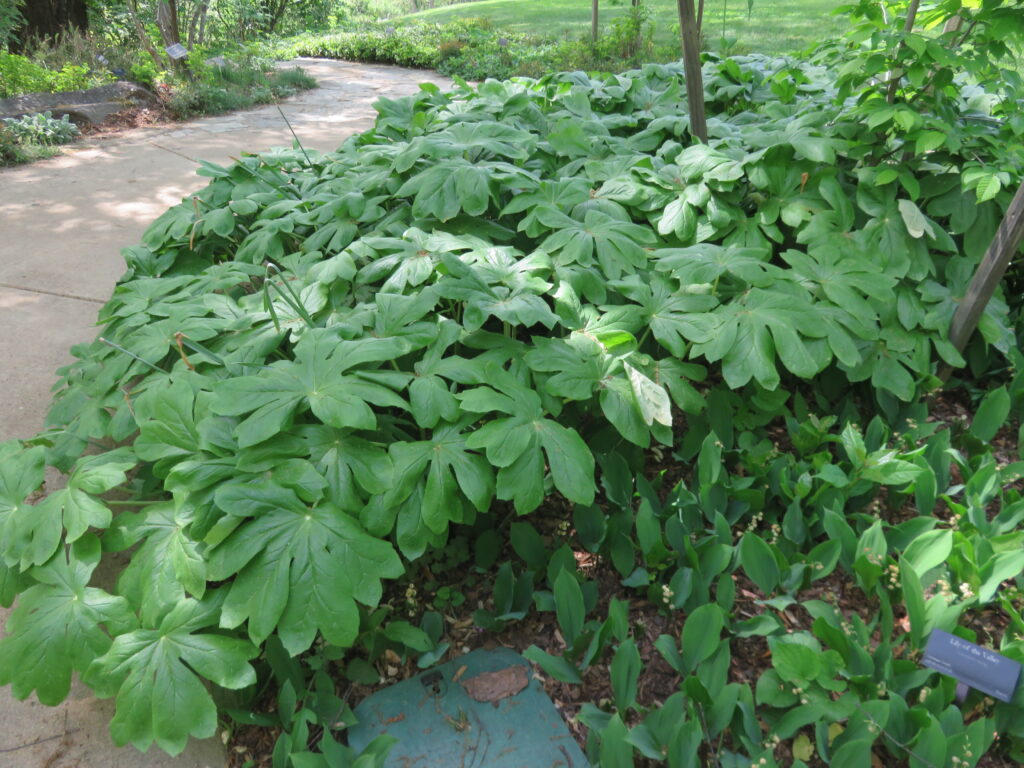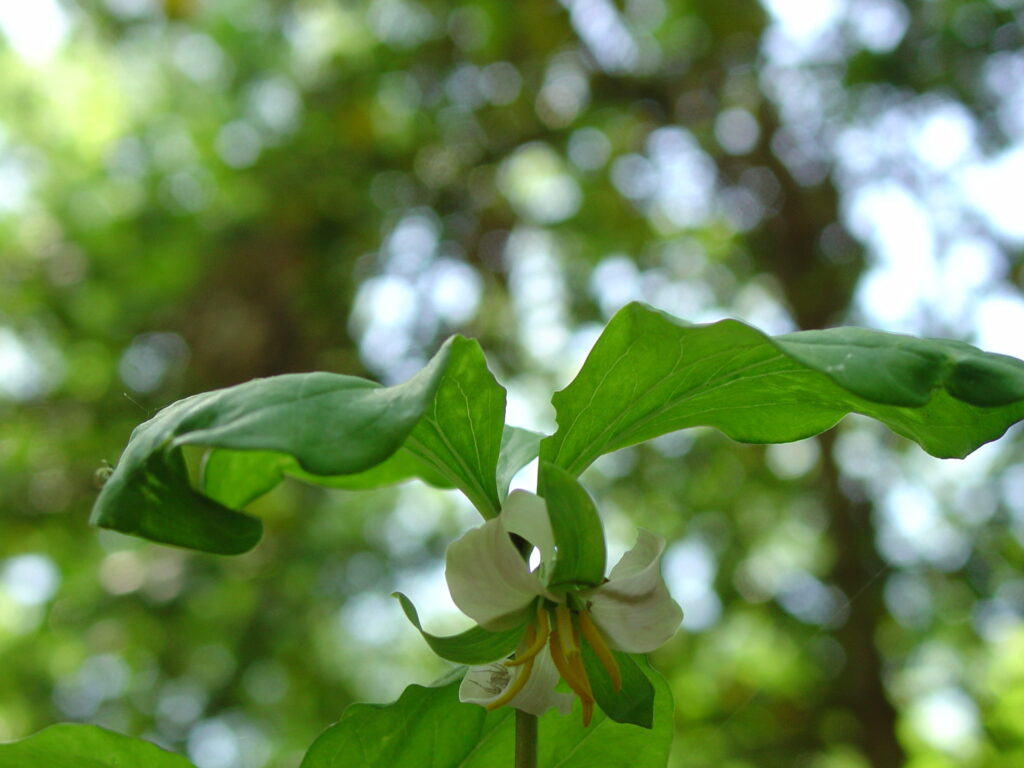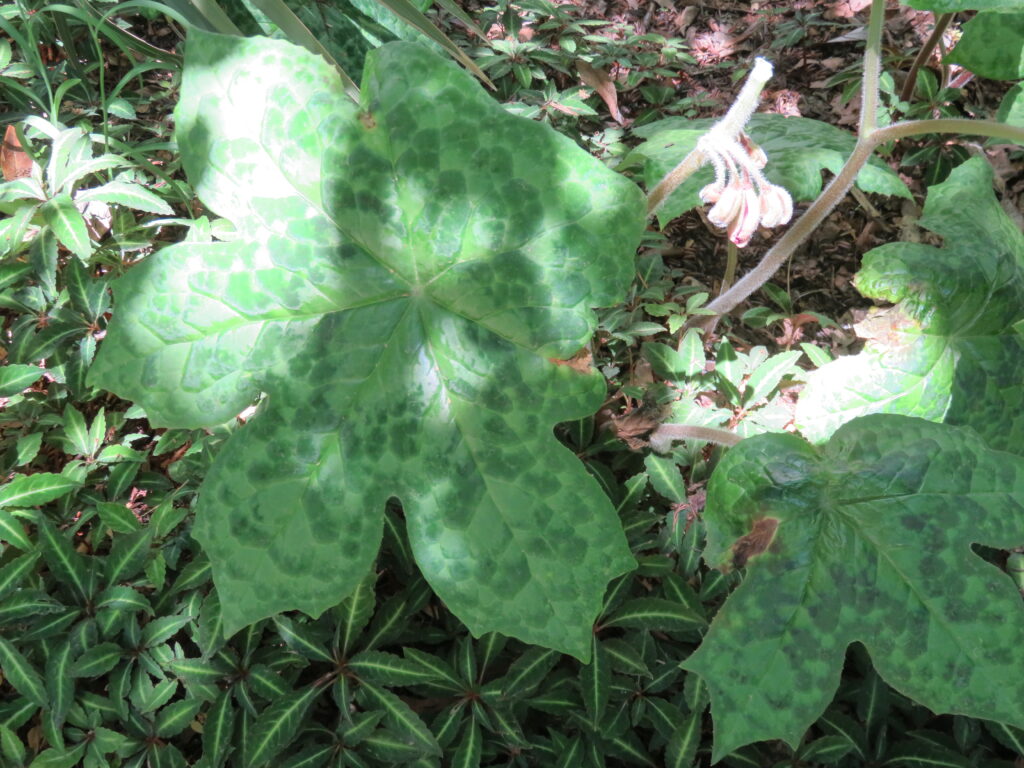
Mayapple (Podophyllum peltatum) is a native herbaceous perennial wildflower that forms dense mats. It is an early spring riser in the shade garden (USDA hardiness zones 3-8). Mayapples are exceptionally hardy woodland plants found in most of eastern North America and as far south as the State of Texas. They’re typically found in colonies in open woodlands, shady fields, and along roadsides and riverbanks. Mayapple is a member of Barberry (Berberidaceae) family.
Each plant grows 1 to 1.5 feet tall, and 0.75 to 1 foot wide with 1-2 leaves and a single 3-inch-wide flower. From April to May the solitary nodding, white flower hangs in an axil between the plant’s two leaves. The sepals are shed as the flower opens, revealing 6 to 9 waxy petals and 12 to 18 stamens with bright yellow anthers.

The palmately-lobed, umbrella-like leaves have deeply divided lobes that stand erect on an elongated greenish main plant stem and can measure up to 12 inches in diameter. The edible fruit is about 2 inches long, lemon, fleshy, and ripens to a golden yellow during summer. Once summer heat arrives, the plant goes dormant and the foliage disappears.
Mayapples prefer partial to full shade and grows best in moist, humus-rich, acidic, sandy to loamy soils and cool temps. Early-riser mayapples may need protections from hard frosts in spring. Flowers attract pollinators, particularly bumblebees and early native bees. Mayapples colonize via rhizomes and may be propagated by division or seeds. Rhizomes are best divided in the fall.
This native wildflower is best utilized for naturalizing in a woodland or native garden. All parts of the plant are highly poisonous except for its ripened fruit which is edible. Protective gloves should be worn while handling any part of this plant because of the potential for severe contact dermatitis.
Insects, Diseases, and Other Plant Problems: Mayapple has no serious insect or disease problems. Fungal rust diseases may infect the leaves following an exceptionally long wet spell. Plants are deer and rabbit tolerant.
Two Unique Asian Selections

Spotty Dotty is standout Asian hybrid selected for its coloring, frost tolerance, vigor, and rhizomatous habit. New umbrella-like leaves are chartreuse with dramatic chocolate-brown spotting. In summer, the leaves are green with lightly spotted areas. Large garnet red flowers in clusters of 5 or more are located under the leaves. (Zones 6-9).
Deformed leaf mayapple (P. deformis) is another Asian species with distinctive leaves with a quadrangular shape and flaunts in the dramatic, purple patterning on the top surface. Clusters of red-purple flowers hang just beneath the foliage in late spring. (Zones 6b-9).

 Posted in
Posted in 
